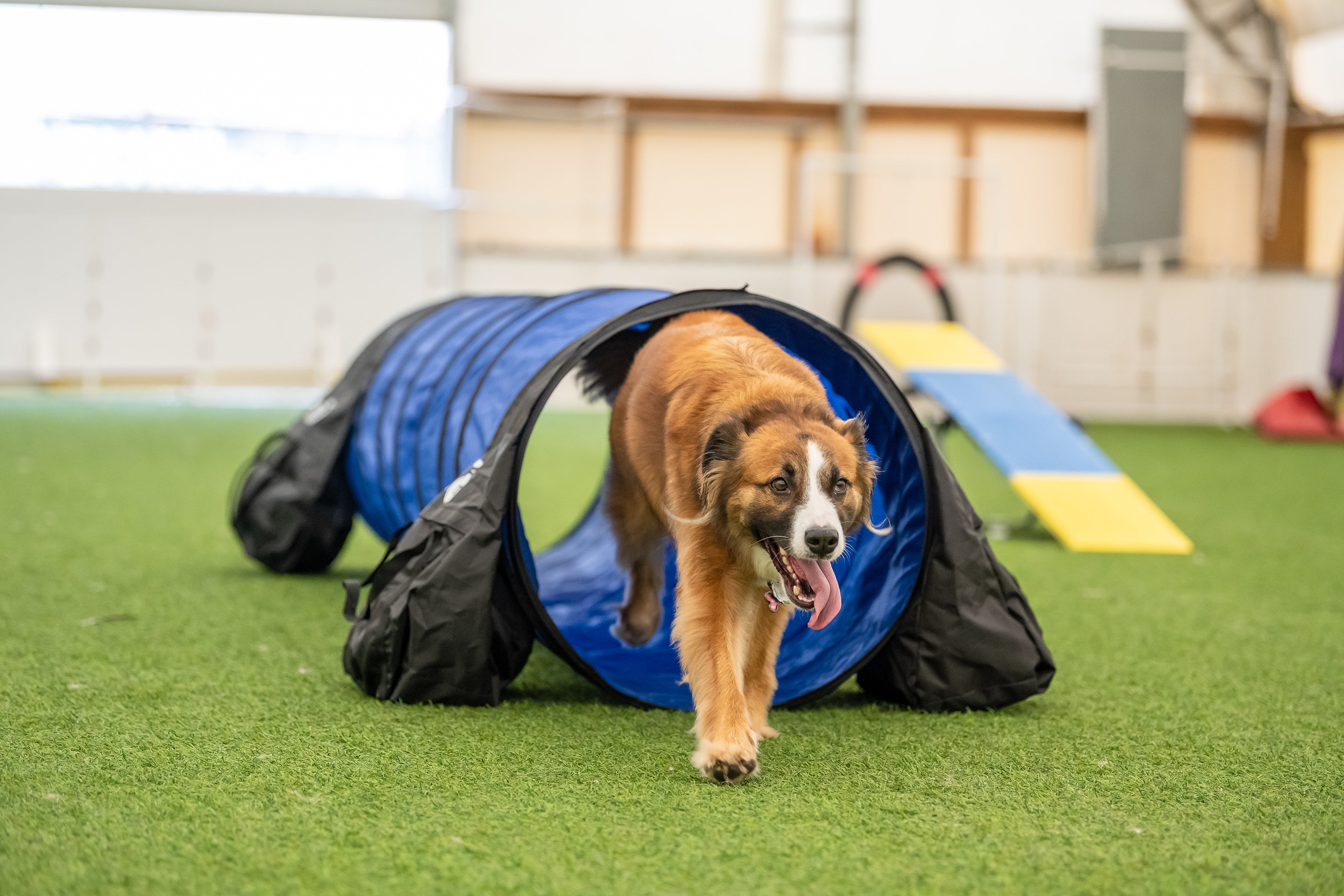Dog agility is a thrilling and engaging activity that not only brings joy to our furry friends but also fosters a strong bond between dogs and their handlers. However, amidst the excitement, it’s crucial to prioritize safety to prevent injuries and ensure the overall well-being of our canine companions. Here’s a brief guide to fostering agility safety:
The information provided regarding canine agility safety is intended for general informational purposes only. It does not constitute veterinary advice. Always consult with a qualified veterinarian or professional animal trainer for specific guidance and recommendations tailored to your dog's individual needs and health condition before engaging in any agility activities or exercises. Any actions taken based on the information provided are at the sole discretion and responsibility of the dog owner or handler. The safety and well-being of your dog should always be the primary concern.

Training and Preparation
Physical Fitness: Before engaging in agility training, ensure your dog is physically fit. Regular exercise, proper nutrition, and routine check-ups are essential.
Gradual Progression: Start with basic agility elements and gradually increase difficulty. Rushing through training can lead to stress and injuries.
Proper Warm-up and Cool-down: Similar to human athletes, dogs need warm-up exercises to prepare their muscles and cool-down routines to prevent strain post-training.
Equipment Safety
Quality Gear: Invest in high-quality, well-fitted gear including harnesses, collars, and safety equipment like weave poles, tunnels, and jumps. Inspect gear regularly for signs of wear and tear.
Appropriate Surfaces: Ensure the agility course surface is safe and suitable for your dog’s paws. Avoid rough or slippery surfaces to prevent slips and injuries.
Proper Setup: Set up equipment securely, following guidelines. Instability or improper placement can cause accidents.
Handler Awareness
Education and Understanding: Handlers must understand agility basics, recognize signs of fatigue, stress, or discomfort in their dogs, and know when to stop or modify exercises.
Consistent Communication: Establish clear communication with your dog using positive reinforcement and cues. This helps in directing them through the course safely.
Health and Recovery
Rest and Recovery: Dogs need adequate rest between training sessions to prevent physical exhaustion and mental burnout.
Injury Assessment: Monitor for any signs of discomfort or injury. Immediate veterinary attention is necessary if any issues arise.
Emotional Well-being: Pay attention to your dog's emotional state during training. Ensure it remains a fun and positive experience for them.
Environmental Considerations
Weather Conditions: Avoid extreme weather conditions like high heat or freezing temperatures, as they can affect your dog’s performance and health.
Training Area Safety: Keep the training area free from hazards such as sharp objects, toxic substances, or other potential dangers.
Continuous Evaluation
Regular Assessments: Periodically assess your dog’s agility performance and health. Adjust training routines as needed to prevent overexertion or boredom.
Professional Guidance: Consider seeking advice from experienced trainers or veterinarians to ensure you’re following safe and effective training methods.
By prioritizing safety measures and taking a proactive approach to your dog’s well-being, you can enjoy the excitement of agility training while minimizing the risks of injuries. Remember, a safe and happy dog is the best agility partner you can have!



